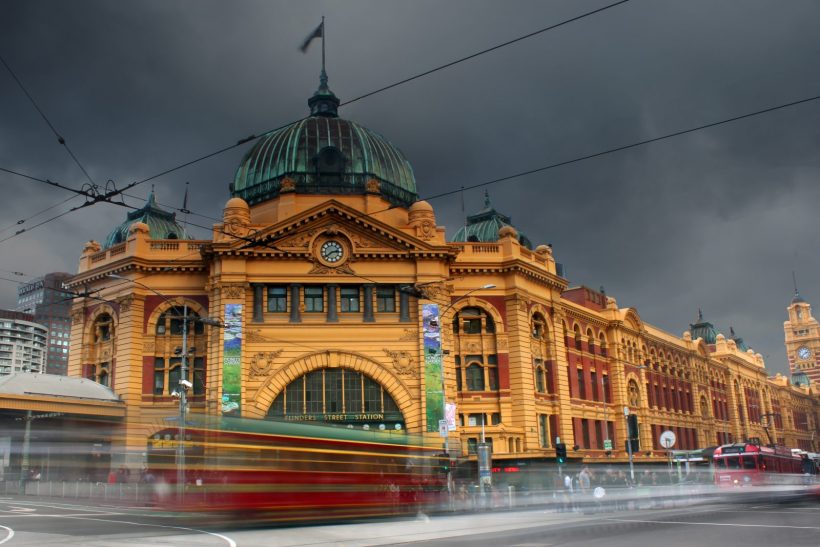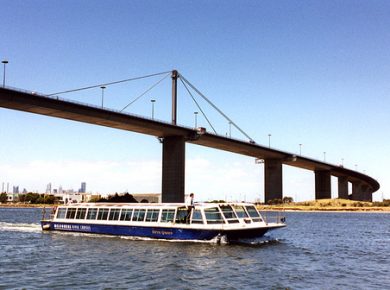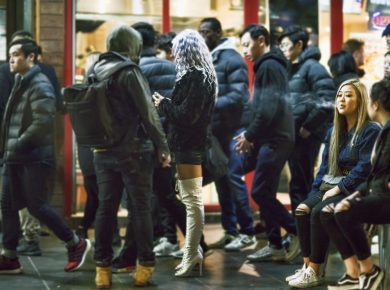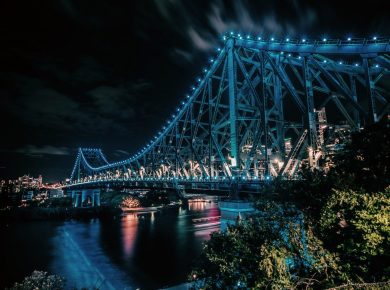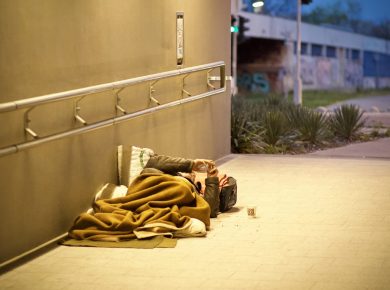Melbourne will double in population in the next 30 years, our roads and public transport are congested, and the cost of rail and freeway projects is massive. Our metropolis is increasingly segregated between the rich, well serviced inner parts of our city, and our less well served and less well-off middle and outer suburbs, where the vast majority of us live.
There is no room to build more roads to bring workers into the inner city and only 10% of Melbournians go to work by train. Even if we could double our train system’s capacity over the next 30 years it would only keep up with the rate of population growth, leaving this ratio unchanged.
The Melbourne Municipality is a hub for new jobs, particularly in recent years with the growth of Docklands, and the Government, seeking to resolve the pressure, is responding by building massive, expensive radial rail and freeway projects. However, trying to “build our way out of congestion” ultimately always fails. More transport facilities simply generate more and longer trips. An overly CBD dominated Melbourne will become increasingly segregated by where you live: from the well serviced, rich inner areas and the less well-off suburbs. It will become more congested and increasingly expensive to service. Services will be provided increasingly inequitably with all of us paying the bills but only some of us getting the benefit.
There is a solution however which is seemingly simple, has the potential to ease congestion, relieve the financial pressure on government to build new transport projects, free up time in our daily lives, and help break down the inequity between different parts of the city.
We need to “localise” our city. We need Melbourne to meet our daily needs without the need for excessive travel.
Reducing the frequency and length of travel is far and away the most effective way of resolving many of our city’s problems. At the risk of oversimplifying something complex, if we only travelled half as far in our daily commute, Melbourne could cope with twice the population without worsening congestion. However, to do this we would have to achieve what we planners have been talking about for decades: bringing “jobs closer to home”, creating a 20-minute city/neighbourhood, making our city a “city of cities” and moving towards a powerful polycentric city.
But our planning and investment policies are trying to do everything at once, we are building a centralised CBD-dominated city while espousing the benefits of a “localised” city. While we must retain a powerful CBD, if we wish to gain the benefits of localisation, we need broad agreement that this is the Melbourne we want and then ensure that our planning, zoning controls, and infrastructure investments are prioritised to build that type of city. At the moment we are trying to be all things to all people.
To achieve a much broader spread of high-quality employment we have to take stronger steps to support business and employment growth in our major employment clusters such as Monash, our major activity centres, local centres and encouraging working from home. We need to improve public transport to these centres, free up zoning controls to allow higher density living in areas close to business areas (to make active transport a viable option for more workers), make planning rules less restrictive on where business can locate, and give first priority to infrastructure projects which support this type of city. We should introduce differential charging regimes for both private vehicles and public transport to help manage movements on congested routes, something currently not popular with Government.
But there are hopeful signs, we have a Minister for Suburban Development, and some excellent projects which directly support a localised city such as the highly successful level crossing program and discussion around the Suburban Rail Loop, despite the many challenging issues this will entail. Some Councils are far more active than others in supporting local business such as Brimbank’s work on the urbanisation of the Sunshine Centre.
Perhaps the major problem with creating a localised city is that a multitude of small projects is not as politically attractive and as easy to understand as a rail or freeway megaproject, particularly in the run up before elections. Freeing up zoning controls can often be unpopular locally and decisions such as some form of congestion charging are unlikely to be popular for those who are causing the congestion.
While each of these problems can be overcome, the biggest problem is that we’re not talking about the need to travel less to live a great life. We talk about infrastructure and we talk about congestion: we don’t talk about how we should minimise how far we have to travel to do the great things that we want to do.
Our challenge is how we get this crucial aspect of urban planning recognised as the solution to our city’s growth, and not just as an afterthought.
